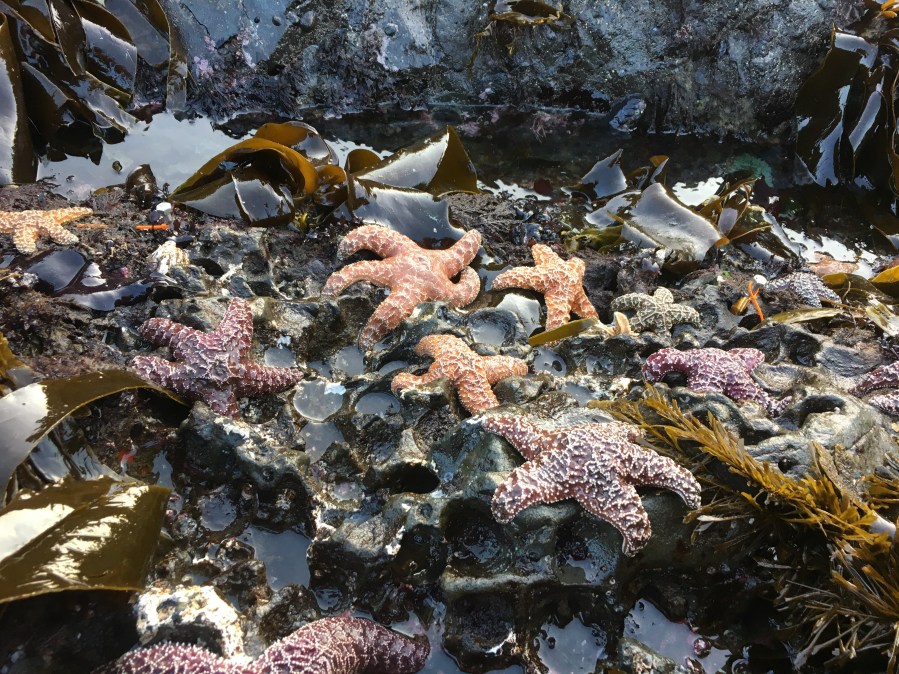PORTLAND, Ore. (KOIN) — After more than a decade of decline, Oregon and Northern California sea stars appear to be making a comeback.
A baby boom of ochre sea stars is enabling the species to recover on the Oregon Coast, according to the latest findings from scientists at Oregon State University and Cal Poly San Luis Obispo. The study was recently published in the journal Ecosphere.
“Wasting disease remains in circulation and populations continue to fluctuate, but there’s also much evidence that ochre sea stars are bouncing back,” said Sarah Gravem, the study’s lead author.
Until recently, the ochre sea star population had been in decline since a mysterious disease caused a mass-die off. The disease, first recorded in 2013, decimated sea star populations from Mexico to Alaska. It causes the sea stars to develop lesions and twisted arms as they appear to melt away.
Ochre sea stars (Oregon State University)
The disease killed between 59 and 84% of ochre sea stars along the Oregon Coast, according to the study. But now, population numbers are back up.
“After declines in sea star numbers of up to 84% in 2014, we quickly saw an 8,000% increase in young sea stars landing on shore,” Gravem said. “Populations are now large enough that sea stars are on the way to resuming their role as a keystone predator in the intertidal zone; at three-quarters of the study sites, predation on their favorite prey, California mussels, has recovered.”
Gravem was a postdoctoral researcher at OSU when the project began, and is now an assistant professor at Cal Poly. She worked with Bruce Menge, a distinguished professor of integrative biology in the OSU College of Science, to analyze ochre sea star populations at eight locations over 23 years.
Young adult ochre sea stars (Oregon State University)
The study doesn’t determine whether the population boom was triggered by the epidemic or whether it’s a coincidence. Still, the researchers said the results are encouraging because of the role they play in the ecosystem.
“We showed that sea stars have now grown abundant and large enough that they are eating mussels at similar rates to before the epidemic at most sites in Oregon,” Menge said.
Overall, the average body sizes of the sea stars are still about 25 to 65% smaller than they were previously and populations are less steady year to year than they were before the epidemic.
“The connection between the sudden decline of ochre sea stars and the baby boom remains elusive,” Gravem said. “It’s certainly possible they are linked, which would mean these sea stars may be resilient to mass mortality events. It is also possible that the baby boom was unrelated to the disease, and simple luck enabled this relatively rapid recovery.”





